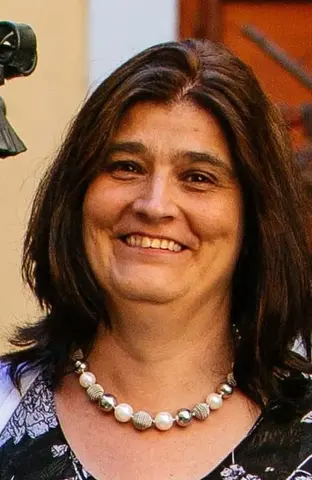Dr. Judit Majorossy
judit.majorossy@uni-erfurt.deFellow (Max Weber Centre for Advanced Cultural and Social Studies)
Visiting address
Max-Weber-Kolleg für kultur- und sozialwissenschaftliche Studien
Campus
Nordhäuser Str. 63
99089 Erfurt
Mailing address
Universität Erfurt
Max-Weber-Kolleg für kultur- und sozialwissenschaftliche Studien
Postfach 90 02 21
99105 Erfurt

Personal information
Curriculum Vitae
Judit Majorossy studied in Pécs, Budapest, and Bratislava. She received her PhD in Medieval Studies from the Department of Medieval Studies of CEU (and as a previous Marie-Curie fellow, with her doctoral dissertation received the title of European Doctorate in the Social History of Europe and the Mediterranean, too). She hold positions in different research projects: at the University of Pécs (project on comparative regional history), at the University of Budapest (individual research project on urban elites as well as on social topography and medieval usage of urban space), in the National Archives of Hungary (project on urban elite), in the Hungarian Academy of Sciences (historical town atlases), and in the Austrian Academy of Sciences (Visions of Community: Comparative Approaches to Ethnicity, Region and Empire in Christianity, Islam and Buddhism, 400–1600 CE). She was an invited scholar at the Institute of Advanced Studies at the University of Edinburgh (2008) and a Humboldt-fellow at the Institute of Comparative Urban History in Münster (2009–2010). She has taught at the History Department at the University of Vienna as an associate post-doctoral researcher of the Institut für Österreichische Geschichtsforschung. And she also was a visiting faculty at the ELTE (2011, 2012, 2015) in Budapest and at the CEU in Vienna (2021) with courses in historiography, in palaeography, and in late medieval urban and social (and religious) history. She is the editorial board member of the Korall Hungarian Social Historical Journal and the Urbs Hungarian Yearbook of Urban History, and the member of the Österreichischer Arbeitskreis für Stadtgeschichtsforschung. She has several publications in the field of late medieval social and religious life in Hungarian towns, edited several volumes and published the late medieval last wills of Pressburg in a two-volume source edition. Her recently edited work on Practising Community in Urban and Rural Eurasia (1000–1600) just came out by Brill (2021). Her book on Piety in Practice: Urban Religious Life and Communities in Late Medieval Pressburg (1400–1530) is also in print. Recently she is working on a regional comparative urban network project.
Research project
Spaces and Ways of Belonging: The Religiosity of Changing Urban Communities in Late Medieval East Central Europe
The major aim of the project is to explore the link between internal efforts to reform and to open up the religious community towards its lay urban environment in the fifteenth century and demonstrate the functioning of these new social strategies on the example of a few selected East Central European towns. Over the fourteenth and fifteenth centuries, when urban communities gradually took a bigger share or became more involved in religious activities, towns and urban contexts became laboratories of different developments of religious life in this particular region of Central Europe. The project also investigates the various strategies used to spread reform ideas and reactions to crisis and changes among different social groups and religious communities in gradually differentiating urban contexts. The new perspective to the analysis will a regional comparative analysis beyond the traditional time span. The changing intensity and structure of bequests; the ways how certain urban religious institutions function and the process of transformation of lay religious life; the role of kinship (networks and strategies) in shaping the institutional framework of civic religiosity with the inclusion of the role of gender; and the usage of space and social topographical aspects are among the research questions for a period between the late-fourteenth and mid-sixteenth centuries.

